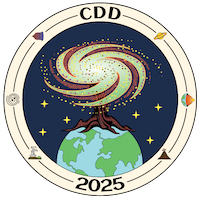Orateur
Description
The study of X-ray and extreme ultraviolet (together, XUV) emission from stars is recently experiencing a renewed interest in the fields of star-planet interactions and habitability. The presence of an atmosphere is usually considered a requirement for habitability and XUV fluxes are a main concern when trying to establish whether a planetary atmosphere will fade away with time. Particular attention is given to M dwarfs stars, as they present long-term flaring activity, and the habitable zone (HZ) for these stars are really close. This imply that HZ planets around them may experience really high XUV fluxes during their lifetime. A thoughtfully analysis of XUV emission from M dwarf and their flaring behavior is a needed input for atmospheric modeling. Proxima Centauri represents one of the best candidates for in-depth studies of XUV radiation because it is the closest star to us and presents high activity. We have analyzed archival data of Proxima Centauri from the XMM-Newton and Chandra telescopes, and produced temporal series of its X-ray emission. We have paid special attention to calibration and time-resolution. We propose an original simplified pile-up correction and find that, depending on the treatment of this instrumental effect, fluxes of radiation with energy between 0.1 and 12.0 keV may vary by up to 30%. We report also strong dependence on the energy. We propose a time-binning algorithm that allows to reach a time resolution of up to 90s. The quiescent and the flaring emissions from Proxima Centauri are characterized both in energies and in frequencies using nearly 6 days of observations spanning 19 years. Luminosities in the 0.1 - 12.0 keV energy range are presented with uncertainties less than 10% and average time-resolution of 5 minutes.
| Speaker information | PhD 2nd year |
|---|

